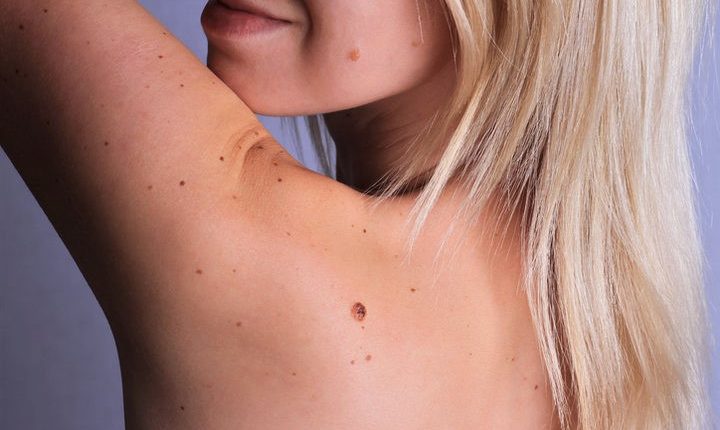
Nevus of Spitz, an overview of the benign tumour also known as juvenile melanoma
Spitz’s nevus is a benign tumour that affects the skin and usually develops in childhood. The lesion is caused by a proliferation of epithelioid and spindle-shaped melanocytes
Also called juvenile melanoma, Spitz’s nevus affects mainly young individuals, has a rapid, but time-limited growth and a reddish colour.
It is named after Sophie Spitz, the pathologist who first described the disease in 1948.
It has giant cells with little pigment, extending as far as the reticular dermis.
Differentiating it from melanoma is often difficult, but the use of immunohistochemical investigations to find markers such as HMB45 can be useful.
Nevus of Spitz: what is it?
Nevus of Spitz is a melanocytic tumour with a mostly benign course.
Rarely, the transformation occurs in a malignant sense.
The lesion most often appears on the face, lower limbs and trunk, presenting as a pink or red-brownish macula, nodular or dome-shaped, but always uniformly pigmented.
At the beginning the Spitz nevus grows very rapidly, later its size becomes stable.
It has a symmetrical and well-circumscribed shape with a diameter of less than one centimetre.
Difference between Spitz’s nevus and melanoma
Spitz’s nevus is often confused with melanoma because it has a very similar histological appearance.
This is why a differential diagnosis is necessary.
During the dermatological examination and subsequent examinations the Spitz nevus must be distinguished from other pathologies such as molluscum contagiosum, verruca vulgaris, pyogenic granuloma and dermatofibroma.
Therefore, when the lesion is more than one centimetre in diameter, with atypical features or ulcerations, it must be biopsied.
In some cases the doctor may decide to proceed with total excision.
If the patient only has small lesions that remain stable, on the other hand, periodic follow-up and medical evaluation is recommended to monitor possible changes.
Spitz’s nevus: symptoms
Spitz’s nevus occurs on the face, legs or head.
It has a larger growth than other moles with a width ranging from a few millimetres to a centimetre.
The symptoms can be detected with the naked eye.
The Spitz’s nevus is dome-shaped and its colour changes from reddish brown to pinkish.
In some cases it may be colourless, but also black or blue.
The shape changes during growth: usually the nevus is light-coloured and round in shape, later becoming pigmented.
Patients who suffer from it complain of itching around the nevus or on its surface, clearly visible blood vessels, and a scaly, flaky appearance.
Causes
Spitz’s nevus develops due to excessive production and accumulation of melanocytes, the skin cells.
The causes of the development of this formation in some individuals rather than others are not yet clear.
Risk factors include a very fair complexion prone to sunburn, a history of repeated severe burns, fair hair and freckles.
Spitz’s nevus is more frequent in children under ten years of age, who have many moles on their bodies.
Spitz’s nevus: treatment
Spitz’s nevus is removed surgically, but can cause scarring.
Therefore, in cases where the formation is not cancerous, medical monitoring is recommended.
If the lesion is pigmented, symmetrical and less than one centimetre wide, medical monitoring is recommended every six months until it stops growing and changing.
Removal is only carried out if the Spitz nevus has an atypical shape and colour.
Read Also
Emergency Live Even More…Live: Download The New Free App Of Your Newspaper For IOS And Android
Nevi: What They Are And How To Recognise Melanocytic Moles
Dermatological Examination For Checking Moles: When To Do It
Dysplastic Nevus: Definition And Treatment. Should We Be Concerned?
What Is A Tumour And How It Forms
Rare Diseases: New Hope For Erdheim-Chester Disease
How To Recognise And Treat Melanoma
Moles: Knowing Them To Recognise Melanoma
Skin Melanoma: Types, Symptoms, Diagnosis And The Latest Treatments
Melanoma: Prevention And Dermatological Examinations Are Essential Against Skin Cancer
Symptoms And Causes Of Spitz Nevus
What Is A Dysplastic Nevus And What Does It Look Like?
Onychophagia: My Child Bites His Nails, What To Do?
Russia, Doctors Detect Mucormycosis In Covid-19 Patients: What Causes The Fungal Infection?
Parasitology, What Is Schistosomiasis?
Onychomycosis: Why Do Fingernails And Toenails Get Fungus?
Nail Melanoma: Prevention And Early Diagnosis
Ingrown Toenail: What Are The Remedies?
What Is ‘Hand Foot And Mouth’ Disease And How To Recognise It
Dracunculiasis: Transmission, Diagnosis And Treatment Of ‘Guinea-Worm Disease’
Parasitoses And Zoonoses: Echinococcosis And Cystic Hydatidosis
Trichinosis: What It Is, Symptoms, Treatment And How To Prevent Trichinella Infestation
Dermatomycosis: An Overview Of Skin Mycoses



